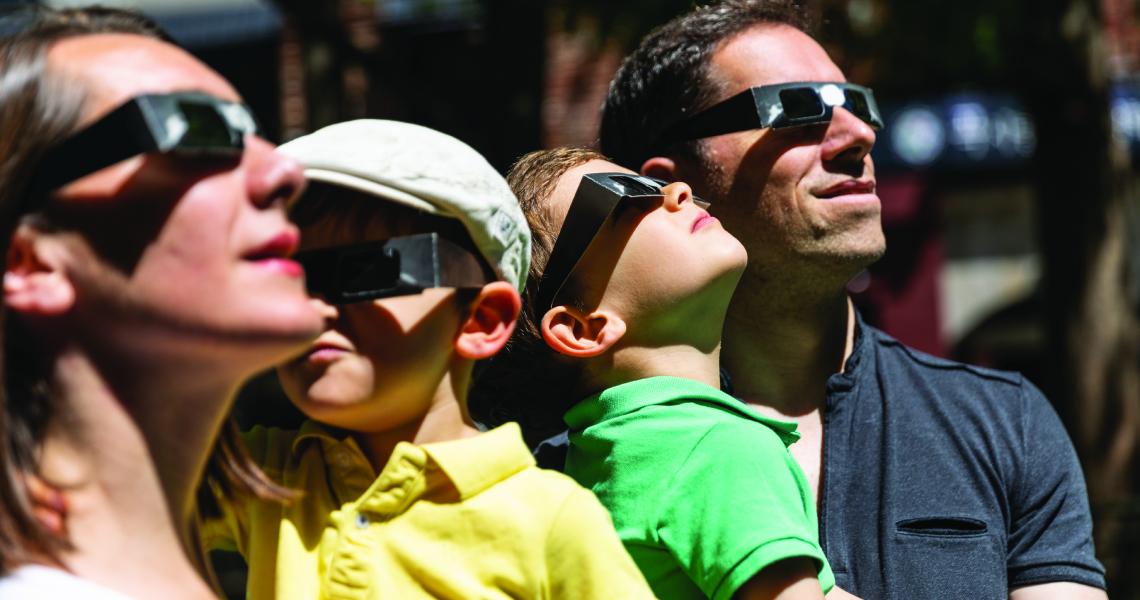With that long, wet spring now well behind us and the summer weather appearing like it is here to stay for a few months, it seems that the locals and visitors are taking full advantage of the outdoor recreational activities around Vermont. This means increased time spent outside and likely increased sun exposure, so I wanted to make sure that we while we are having some fun-in-the-sun this summer, we stay mindful of potential health consequences that can arise from excessive sun exposure.
Taking a proactive approach to your health through prevention methods is by far a better plan than having to react to a new diagnosis, and skin cancer is no different. I will be discussing prevention strategies at the end of the article, but let’s review the basics on skin cancer, which I hope will enlighten us to better understand this problem and encourage Vermonters to employ preventative measures this summer.
Risk Factors for Skin Cancer
First, let’s review the risk factors for skin cancer:
- UV radiation (including from the sun and tanning beds),
- history of sunburns,
- light complexion and eye color,
- family history of certain skin conditions,
- chronic skin inflammation,
- immune-system suppression, and
- certain environmental exposures.
It is important to note that it is the cumulative exposure of UV radiation, as well as the type of exposure, that combine to determine the likelihood of developing skin cancer.
Types of Skin Cancer
There are two main types of skin cancer: non-melanoma and melanoma.
Non-melanoma Skin Cancer
The two most common types of non-melanoma skin cancer (NMSC) are called “basal cell carcinoma” (BCC) and “squamous cell carcinoma” (SCC). Although there are no official statistics about incidence of NMSC, it is estimated that the total number of cases in 2012 was approximately 3 million, nearly double all other causes of cancer for that year. Comparing that to melanoma, where statistics from 2016 showed 82,476 new cases, making NMSC approximately 30 times more likely to develop.
Non-melanoma skin cancers can occur anywhere on the skin, but is often on the head, face, neck, back of the hands, arms and legs, which are the areas most likely to be exposed to the sun’s rays. Despite the significantly higher prevalence of NMSC, the likelihood of it becoming fatal is very low, mostly due to the slow-growing nature and easy treatment.
For non-melanoma skin cancers, BCC is by far the most common, accounting for three-quarters of all NMSC. The nose is the most common site where it may occur. The most common aspects of BCC are it being nodular, without symptoms, elevated above the surrounding skin, pearly in appearance and possibly having some small blood vessels within it. Despite these common characteristics, BCC and other forms of skin cancer can appear multiple different ways, so for any skin concerns, seeking out a medical provider is highly recommended.
Squamous-cell carcinoma also tends to appear on sun-exposed portions of the skin, such as the ears, lower lip and backs of the hands. SCCs are more aggressive than BCCs and range in their potential for growth, invasiveness and metastatic potential. SCCs can sometimes appear as scaly red patches, open sores, warts or elevated growths with a central depression. A certain type of skin lesion called actinic keratosis can become cancerous, specifically SCC, so these should be monitored or treated.
The best way to diagnose NMSC is by doing periodic skin self-examinations, and employing partners, friends or relatives to check the areas that are not easily viewed. If there are any concerning skin lesions, especially those that match the descriptions above, it is best to seek out a medical provider to take a look and consider testing the areas with a minor procedure called a biopsy. There are multiple ways to perform a skin biopsy, and once performed, the skin sample is sent to a laboratory for evaluation under a microscope. Depending on the results of the biopsy, you may be required to undergo additional testing or to discuss treatment options.
Treatment of NMSC typically consists of surgery, radiation therapy, skin creams or photodynamic therapy. Once treatment is complete, you will likely need routine skin evaluations with a medical provider along with the use of vigilant prevention methods.
Melanoma
Melanoma is by far less common than NMSC, but is significantly more serious than NMSC. According to the CDC’s statistics from 2016, melanoma was the fifth most common type of cancer in the United States.
- It is estimated that over 90,000 new cases will be diagnosed in 2019, and approximately 10% of those newly diagnosed patients will die because of melanoma.
- In Vermont, there were 330 new cases of melanoma in 2016, with 19 deaths.
- In Washington County from 2012-2016, there were 139 cases of melanoma, resulting in less than 16 deaths.
Melanoma is a more serious form of skin cancer, and it occurs when normal skin cells change into abnormal skin cells and grow out of control. Melanoma can occur anywhere on the skin, including the back, other hard-to-see areas, lining of the mouth, nose and genitals. If not diagnosed and treated, it can spread to organs inside of the body.
Recognizing melanoma first starts with a skin check, either via a self-examination or performed by a medical provider. It often looks like a brown or black mole or birthmark, but it tends to have some different features from those that are normal.
An easy way to remember these features is through the mnemonic A, B, C, D and E:
- Asymmetry – One half can look different than the other half.
- Border – It can have a jagged or uneven edge.
- Color – It can have different colors.
- Diameter – It is larger than the eraser on the end of a pencil.
- Evolution – Its size, color or shape can change over time.
Skin that is affected by melanoma can also bleed, become swollen, red or crusty. A timely evaluation of any skin lesions that have some of these characteristics, or of any suspicious skin lesions by a medical provider, is the best way to diagnose melanoma early and get prompt treatment.
The diagnosis of melanoma is similar to NMSC, through an appropriate method of skin biopsy. If the pathology report is positive for melanoma, a medical provider will likely continue testing until they can figure out which stage the melanoma is in. Staging is a way in which medical providers find out how deep in the skin and how far inside the body the melanoma has spread. Proper treatment will depend on the stage of melanoma, your age and medical problems. Treatment options typically include surgery, immunotherapy, targeted therapy, radiation and chemotherapy. After treatment, you will need to do frequent skin checks both on your own and with medical providers, along with employing preventative measures.
Skin Cancer Prevention
The chance of developing skin cancer, whether melanoma or NMSC, can be significantly decreased with the following preventative methods:
- Stay out of the sun in the middle of the day (from 10am – 4pm)
- Wear sunscreen and reapply it often
- Wear a wide-brimmed hat, long-sleeved shirt, or long pants
- Not use tanning beds
As Benjamin Franklin once said: “An ounce of prevention is worth a pound of cure.” This axiom can apply to most medical conditions, but especially to skin cancer. Having awareness of how much sun exposure you will be getting and taking proper precautions will help decrease your chances of developing skin cancer. Keep in mind that due to the cumulative effects of sun exposure, the preventative steps that you take today will play a role in your future health.
Sources:
- Center for Disease Control - https://www.cdc.gov/cancer/skin/statistics/index.htm
- UpToDate
- “Patient education: Melanoma skin cancer (The Basics)”
- “Patient education: Skin caner (non-melanoma) (The Basics)”
- “Treatment of Lyme disease”
- National Cancer Institute
- Skin Cancer Screening – Health Professional Version - https://www.cancer.gov/types/skin/hp/skin-screening-pdq
- Skin Cancer Treatment – Health Professional Version - https://www.cancer.gov/types/skin/hp/skin-treatment-pdq






